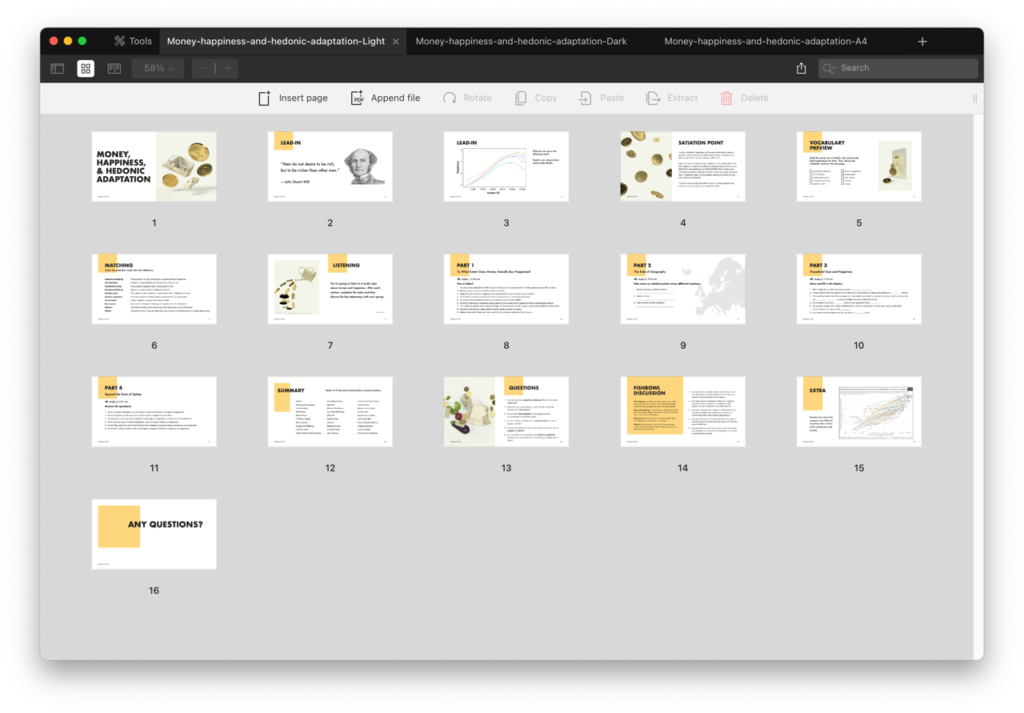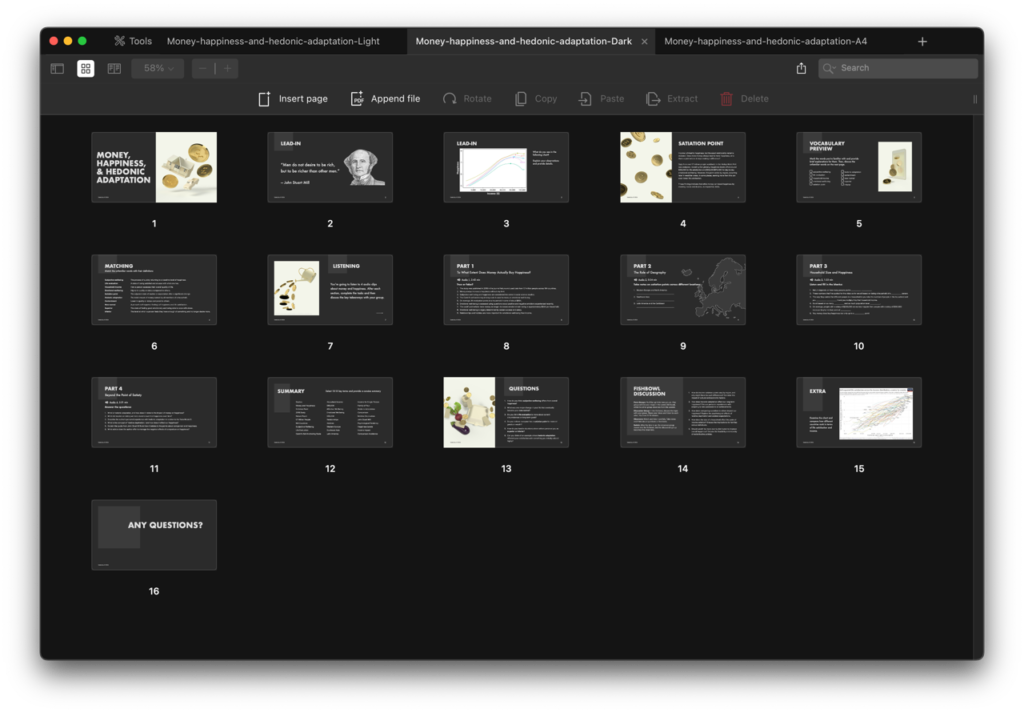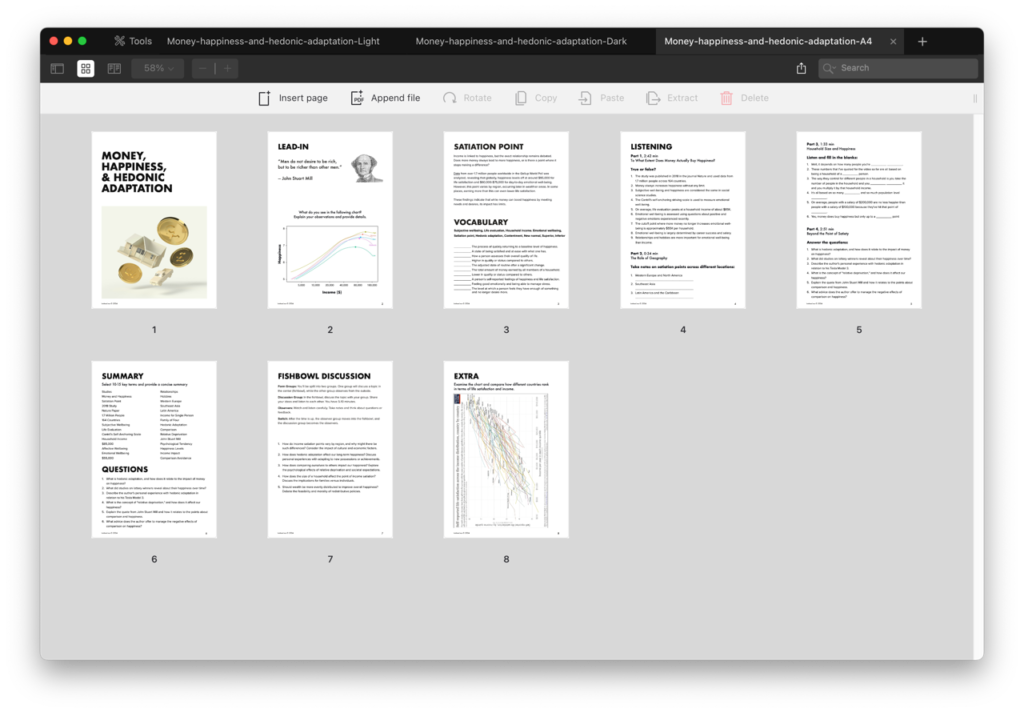Money, Happiness, & Hedonic Adaptation

This C1 advanced listening lesson explores the relationship between money and happiness, focusing on concepts like hedonic adaptation, relative deprivation, and the impact of comparison. Students will analyze how these psychological factors influence subjective well-being and life satisfaction beyond a certain income level. Through listening and comprehension exercises, they will reflect on the diminishing returns of wealth and the importance of mindset.
| Type | Level | Vocabulary | Listening time | Lesson Time |
| Regular Lesson | C1 / Advanced | 10 words | 8 min | 60 min |



Vocabulary
- Subjective wellbeing
- Life evaluation
- Household income
- Emotional wellbeing
- Satiation point
- Hedonic adaptation
- Contentment
- New normal
- Superior
- Inferior
Contents
- Lead-in (quote)
- Lead-in (chart)
- Satiation point
- Vocabulary preview
- Matching
- Listening
Part 1 – True or false
Part 2 – Notes
Part 3 – Fill in the blanks
Part 4 – Questions - Summary
- Questions
- Fishbowl discussion
- Extra chart
Lead-in, Satiation point
This C1 advanced ESL lesson kicks off with a thought-provoking quote by John Stuart Mill, inviting students to share their views on wealth and comparison. Unlike previous lessons, it begins with a quote to spark discussion. Next, students analyze a line chart showing the link between happiness and income, explaining their observations and focusing on key details. The lead-in section concludes with a reading on the satiation point, exploring how income relates to emotional well-being and life satisfaction.
Vocabulary preview, Matching
The vocabulary preview page helps students identify familiar words, saving lesson time for focusing on unfamiliar terms. Students then match these words with definitions on the next page. Teachers should offer assistance and examples as needed.
Listening, Summary
This advanced listening lesson focuses on money and happiness through a series of audio clips. In part one, students listen to a 2-minute 42-second clip exploring whether money buys happiness, followed by a true or false exercise with explanations. Part two, a 34-second clip, examines the role of geography in the money-happiness relationship, where students listen and record numbers for each location. Part three, a 1-minute 33-second clip, discusses household size and happiness, with a fill-in-the-blank activity. Part four, a 2-minute 51-second clip, covers the point of satiety; students preview questions and take notes to answer them. Finally, the summary page helps students review by analyzing 30 key terms and creating a concise summary using 10 to 15 keywords.
Questions, Fishbowl discussion
The next two pages feature six questions using the lesson’s vocabulary, covering topics like subjective well-being, lifestyle, life evaluation, satiation point, and hedonic adaptation. Students should answer these questions, with the option to encourage peer questioning or other interactive activities. The final page, titled “Fishbowl Discussion,” involves splitting students into two groups: one group discusses a complex topic for 5 to 10 minutes while the other group listens, takes notes, and prepares feedback or questions. This activity can be time-consuming but is highly effective for in-depth discussions.
Extra / Homework
At the end of the file, there’s an additional page featuring a chart with a detailed breakdown of self-reported life satisfaction across income distribution by country. This can serve as an extra discussion point in your ESL classroom or be assigned as homework for your students.


